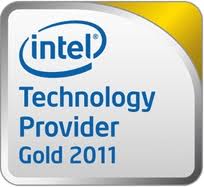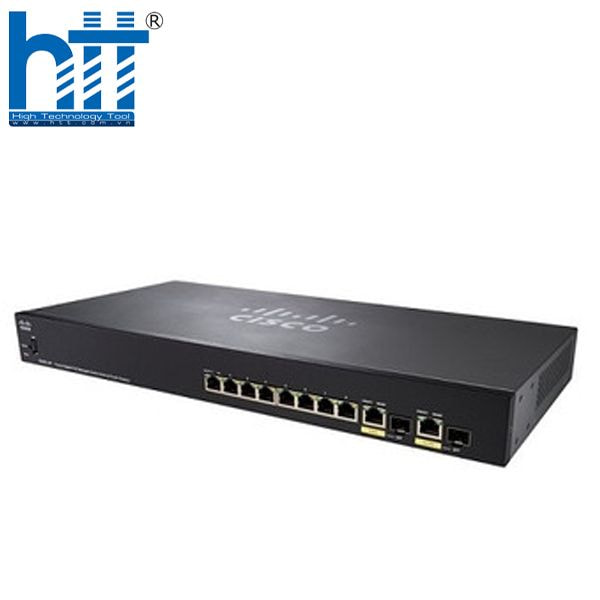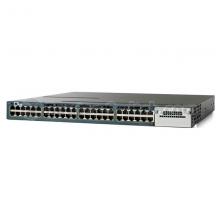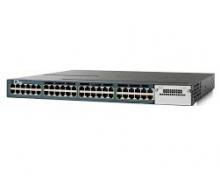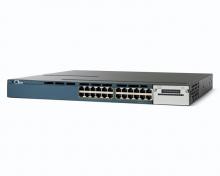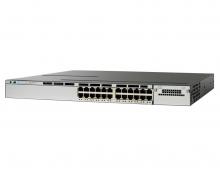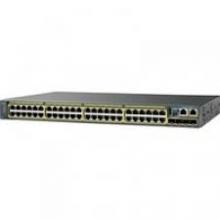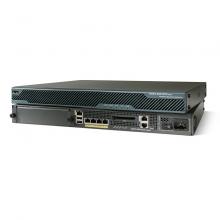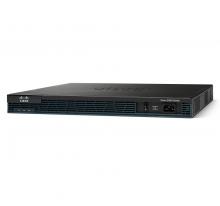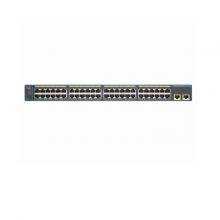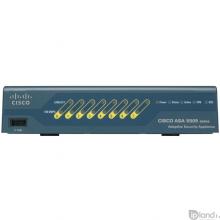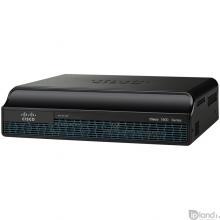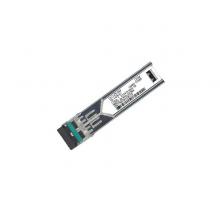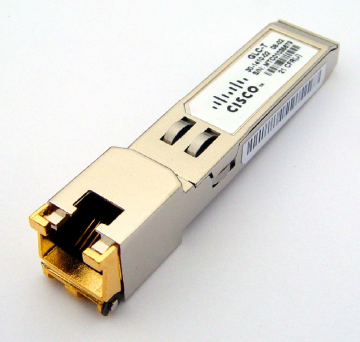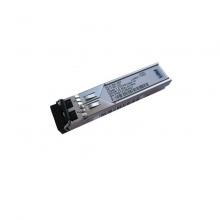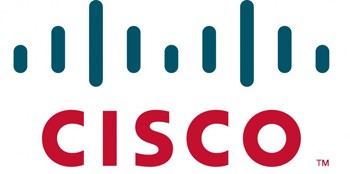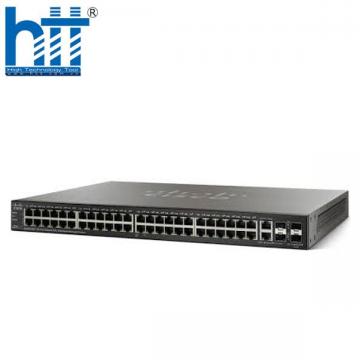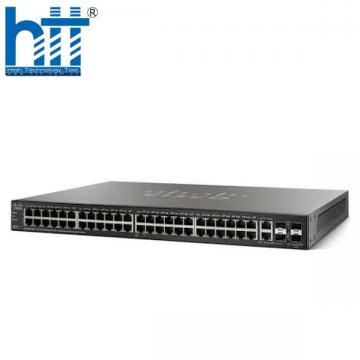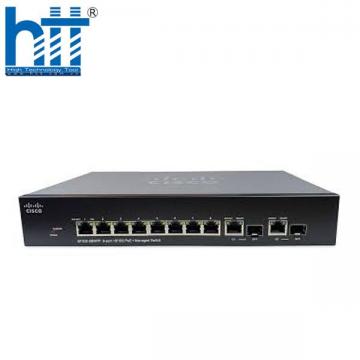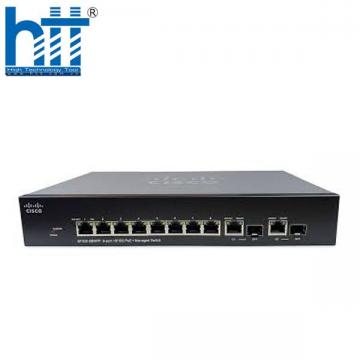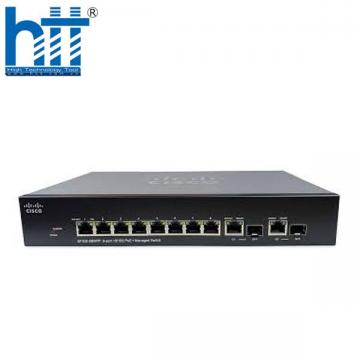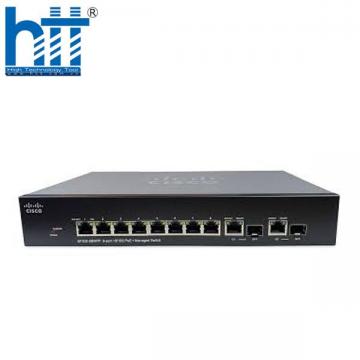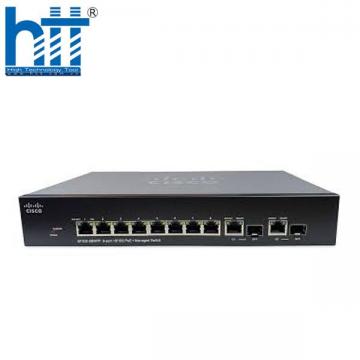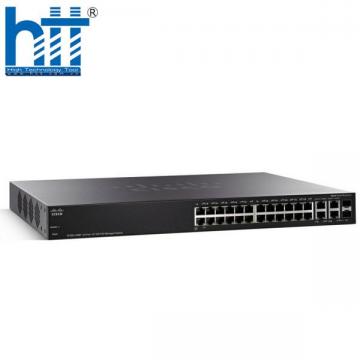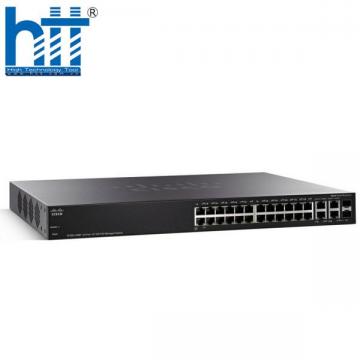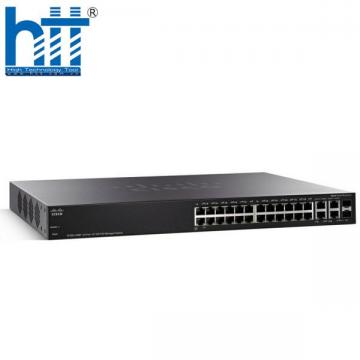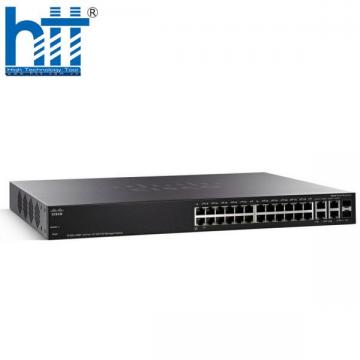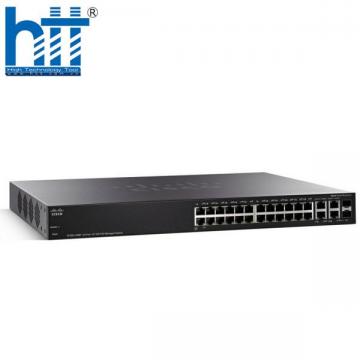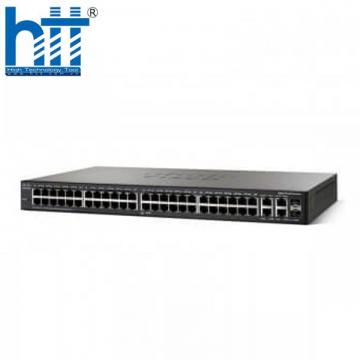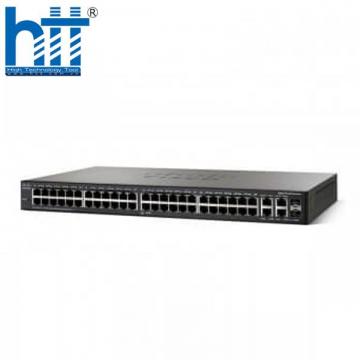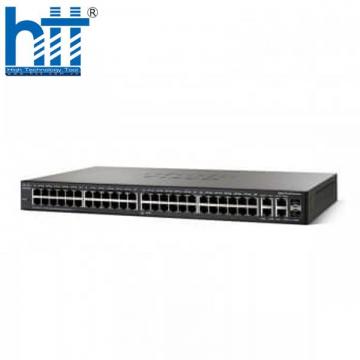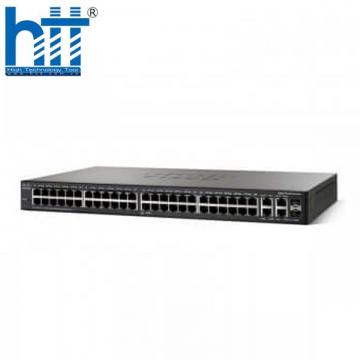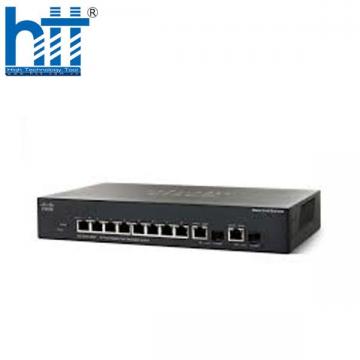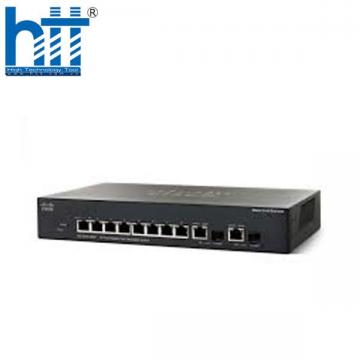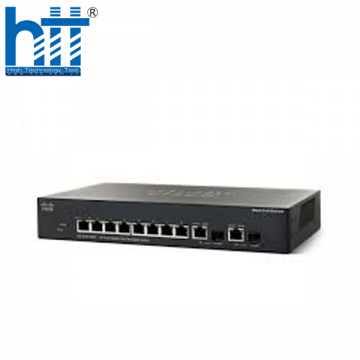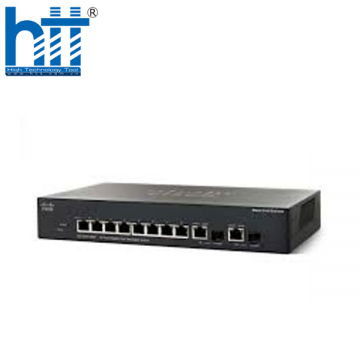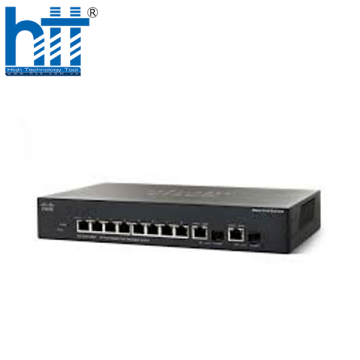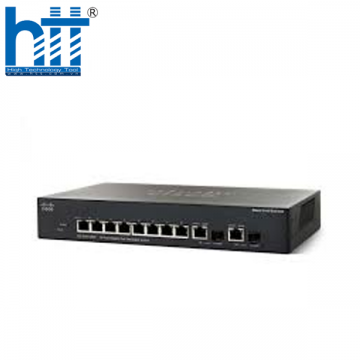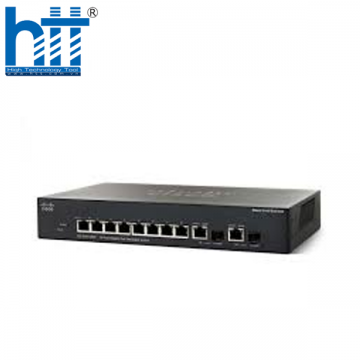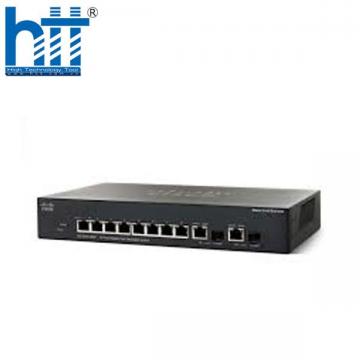|
Bạn đang tìm kiếm một thiết bị mạng nhỏ gọn nhưng mạnh mẽ để triển khai hệ thống camera, wifi hay máy in trong văn phòng? Vậy thì Switch Cisco SG355-10P chính là câu trả lời lý tưởng. Hãy cùng Hợp Thành Thịnh khám phá vì sao sản phẩm này lại là sự lựa chọn tối ưu cho các doanh nghiệp vừa và nhỏ nhé!
1. Tổng quan về Switch Cisco SG355-10P
Switch Cisco SG355-10P thuộc dòng Cisco Small Business 350 Series – dòng sản phẩm được thiết kế riêng để phục vụ nhu cầu hạ tầng mạng của các doanh nghiệp vừa và nhỏ. Đây là một switch layer 3 thông minh, dễ dàng quản lý, cấu hình và đặc biệt hỗ trợ nguồn PoE+ tiện lợi, tiết kiệm chi phí đầu tư cho nguồn điện và dây dẫn.
2. Cấu hình phần cứng mạnh mẽ – Đáp ứng mọi nhu cầu kết nối
Cisco SG355-10P được trang bị:
- 8 cổng RJ45 10/100/1000Mbps PoE+, hỗ trợ tổng công suất 62W – đủ để cấp nguồn cho các thiết bị như điện thoại IP, camera an ninh, Access Point…
- 2 cổng combo mini-GBIC (SFP) cho kết nối quang tốc độ cao, phù hợp khi bạn cần mở rộng mạng LAN hoặc kết nối với switch khác ở khoảng cách xa.
- Băng thông chuyển mạch lên đến 20 Gbps đảm bảo xử lý mượt mà lưu lượng mạng trong các môi trường nhiều thiết bị hoạt động đồng thời.
3. Linh hoạt và thông minh trong triển khai
SG355-10P hỗ trợ công nghệ MDI/MDI-X giúp tự động nhận diện loại cáp (thẳng hoặc chéo), giúp việc kết nối trở nên dễ dàng mà không cần cấu hình phức tạp.
Bên cạnh đó, các tính năng quản lý lớp 3 như Routing tĩnh, Access Control Lists (ACLs), Quality of Service (QoS), giúp tăng tính bảo mật và kiểm soát luồng dữ liệu hiệu quả hơn.
4. Thiết kế nhỏ gọn – Tối ưu không gian làm việc
Thiết bị được thiết kế để bàn (desktop) nên dễ dàng đặt trong văn phòng mà không cần giá đỡ tủ rack. Với lớp vỏ kim loại chắc chắn, hoạt động ổn định, ít tiếng ồn, phù hợp triển khai ở cả những khu vực làm việc chung.
5. Ứng dụng đa dạng trong doanh nghiệp nhỏ
Switch Cisco SG355-10P là lựa chọn hoàn hảo để:
- Kết nối các thiết bị IP như điện thoại, camera, máy in trong từng phòng ban.
- Mở rộng hệ thống wifi nội bộ với các thiết bị Access Point hỗ trợ PoE.
- Tạo một mạng LAN ổn định trong văn phòng với số lượng người dùng vừa phải.
- Liên kết hệ thống mạng từ xa với kết nối quang thông qua SFP port.
Liên Hệ Ngay Để Được Tư Vấn & Đặt Hàng
Liên hệ ngay với Hợp Thành Thịnh để đặc hàng và được tư vấn miễn phí. Ngoài ra Hợp Thành Thịnh còn cung cấp thêm các hãng như: Juniper Networks, HPE Aruba, TP-Link,...Không chỉ cung cấp sản phẩm, chúng tôi còn có dịch vụ sửa chữa chuyên nghiệp sau bảo hành cho các thiết bị như: Màn hình, thiết bị mạng, máy in, máy tính, máy chiếu, ups,... Đồng hành và hỗ trợ tận tâm cho các anh em kỹ thuật, IT, và các cửa hàng tin học.
Thông số kỹ thuật của Switch Cisco SG355-10P
| General Information |
| Product Name |
SG355 10-Port 10/100/1000 PoE+ Managed Switch |
| Manufacturer Part Number |
SG355-10P |
| Product Series |
350 |
| Product Model |
SG355-10P |
| Hardware |
| Capacity in Millions of Packets per Second (mpps) (64-byte packets) |
14.88 |
| Switching Capacity in Gigabits per Second (Gbps) |
20.0 |
| Buttons |
Reset button |
| Cabling type |
Unshielded Twisted Pair (UTP) Category 5 or better for 10BASE-T/100BASE-TX; UTP Category 5
Ethernet or better for 1000BASE-T
|
| LEDs |
System, Link/Act, PoE, Speed, LED power saving option |
| Flash |
256 MB |
| CPU memory |
512 MB |
| Packet Buffer |
12 Mb |
| Environmental |
| Unit dimensions (W x H x D) |
440 x 44 x 203 mm (17.3 x 1.45 x 7.99 in) |
| Unit weight |
2.36 kg (5.20 lb) |
| Power |
100-240V 50-60 Hz, internal, universal |
| Power Dedicated to PoE |
62W |
| Number of Ports That Support PoE |
8 |
| Certification |
UL (UL 60950), CSA (CSA 22.2), CE mark, FCC Part 15 (CFR 47) Class A |
| Operating temperature |
32° to 122°F (0° to 50°C) |
| Storage temperature |
–4° to 158°F (–20° to 70°C) |
| Operating humidity |
10% to 90%, relative, noncondensing |
| Storage humidity |
10% to 90%, relative, noncondensing |
| Acoustic noise and MTBF |
| FAN (Number) |
Fanless |
| Acoustic Noise |
N/A |
| MTBF @40C (hr) |
296,426 |
| Miscellaneous |
| Package Contents |
- Cisco 350 Series Switch
- Power Cord (Power Adapter for Desktop SKUs)
- Mounting Kit included in all SKUs, including desktop models
- Console Cable
- Quick Start Guide
|
| Other Information |
| Product Family |
350 |
Các tính năng của Switch Cisco SG355-10P
|
Layer 2 Switching
|
|
Spanning Tree Protocol
|
Standard 802.1d Spanning Tree support
Fast convergence using 802.1w (Rapid Spanning Tree [RSTP]), enabled by default
8 instances are supported
Multiple Spanning Tree instances using 802.1s (MSTP)
|
|
Port grouping
|
Support for IEEE 802.3ad Link Aggregation Control Protocol (LACP)
- Up to 8 groups
- Up to 8 ports per group with 16 candidate ports for each (dynamic) 802.3ad link aggregation
|
|
VLAN
|
Support for up to 4096 VLANs simultaneously
Port-based and 802.1Q tag-based VLANs
MAC-based VLAN
Management VLAN
Private VLAN Edge (PVE), also known as protected ports, with multiple uplinks
Guest VLAN
Unauthenticated VLAN
Dynamic VLAN assignment via RADIUS server along with 802.1x client authentication
CPE VLAN
|
|
Voice VLAN
|
Voice traffic is automatically assigned to a voice-specific VLAN and treated with appropriate levels of QoS
Auto voice capabilities deliver networkwide zero-touch deployment of voice endpoints and call control devices
|
|
Multicast TV VLAN
|
Multicast TV VLAN allows the single multicast VLAN to be shared in the network while subscribers remain in separate VLANs (also known as MVR)
|
|
Q-in-Q VLAN
|
VLANs transparently cross a service provider network while isolating traffic among customers
|
|
Generic VLAN Registration Protocol (GVRP)/Generic Attribute Registration Protocol (GARP)
|
Protocols for automatically propagating and configuring VLANs in a bridged domain
|
|
Unidirectional Link Detection (UDLD)
|
UDLD monitors physical connection to detect unidirectional links caused by incorrect wiring or cable/port faults to prevent forwarding loops and blackholing of traffic in switched networks
|
|
Dynamic Host Configuration Protocol (DHCP) Relay at Layer 2
|
Relay of DHCP traffic to DHCP server in different VLAN; works with DHCP Option 82
|
|
Internet Group Management Protocol (IGMP) versions 1, 2, and 3 snooping
|
IGMP limits bandwidth-intensive multicast traffic to only the requesters; supports 1K multicast groups (source-specific multicasting is also supported)
|
|
IGMP Querier
|
IGMP querier is used to support a Layer 2 multicast domain of snooping switches in the absence of a multicast router
|
|
Head-Of-Line (HOL) blocking
|
HOL blocking prevention
|
|
Loopback Detection
|
Loopback detection provides protection against loops by transmitting loop protocol packets out of ports on which loop protection has been enabled. It operates independently of STP
|
|
Jumbo frames
|
Up to 9K (9216) bytes
|
|
Layer 3
|
|
IPv4 routing
|
Wirespeed routing of IPv4 packets
Up to 1K static routes and up to 128 IP interfaces
|
|
IPv6 routing
|
Wirespeed routing of IPv6 packets
|
|
Classless Interdomain Routing (CIDR)
|
Support for CIDR
|
|
Layer 3 Interface
|
Configuration of Layer 3 interface on physical port, LAG, VLAN interface, or loopback interface
|
|
DHCP relay at Layer 3
|
Relay of DHCP traffic across IP domains
|
|
User Datagram Protocol (UDP) relay
|
Relay of broadcast information across Layer 3 domains for application discovery or relaying of bootP/DHCP packets
|
|
DHCP Server
|
Switch functions as an IPv4 DHCP server serving IP addresses for multiple DHCP pools/scopes
Support for DHCP options
|
|
Security
|
|
Secure Shell (SSH) Protocol
|
SSH is a secure replacement for Telnet traffic. SCP also uses SSH. SSH v1 and v2 are supported
|
|
Secure Sockets Layer (SSL)
|
SSL support: Encrypts all HTTPS traffic, allowing highly secure access to the browser-based management GUI in the switch
|
|
IEEE 802.1X (Authenticator role)
|
802.1X: RADIUS authentication and accounting, MD5 hash; guest VLAN; unauthenticated VLAN, single/multiple host mode and single/multiple sessions
Supports time-based 802.1X
Dynamic VLAN assignment
|
|
Web-based authentication
|
Web based authentication provides network admission control through web browser to any host devices and operating systems
|
|
STP Bridge Protocol Data Unit (BPDU) Guard
|
A security mechanism to protect the network from invalid configurations. A port enabled for BPDU Guard is shut down if a BPDU message is received on that port
|
|
STP Root Guard
|
This prevents edge devices not in the network administrator’s control from becoming Spanning Tree Protocol root nodes
|
|
DHCP snooping
|
Filters out DHCP messages with unregistered IP addresses and/or from unexpected or untrusted interfaces. This prevents rogue devices from behaving as DHCP Servers
|
|
IP Source Guard (IPSG)
|
When IP Source Guard is enabled at a port, the switch filters out IP packets received from the port if the source IP addresses of the packets have not been statically configured or dynamically learned from DHCP snooping. This prevents IP Address Spoofing
|
|
Dynamic ARP Inspection (DAI)
|
The switch discards ARP packets from a port if there are no static or dynamic IP/MAC bindings or if there is a discrepancy between the source or destination addresses in the ARP packet. This prevents man-in-the-middle attacks
|
|
IP/MAC/Port Binding (IPMB)
|
The preceding features (DHCP Snooping, IP Source Guard, and Dynamic ARP Inspection) work together to prevent DOS attacks in the network, thereby increasing network availability
|
|
Secure Core Technology (SCT)
|
Makes sure that the switch will receive and process management and protocol traffic no matter how much traffic is received
|
|
Secure Sensitive Data (SSD)
|
A mechanism to manage sensitive data (such as passwords, keys, and so on) securely on the switch, populating this data to other devices, and secure autoconfig. Access to view the sensitive data as plaintext or encrypted is provided according to the user-configured access level and the access method of the user
|
|
Layer 2 isolation Private VLAN Edge (PVE) with community VLAN
|
PVE (also known as protected ports) provides Layer 2 isolation between devices in the same VLAN, supports multiple uplinks
|
|
Port security
|
The ability to lock source MAC addresses to ports and limits the number of learned MAC addresses
|
|
RADIUS/TACACS+
|
Supports RADIUS and TACACS authentication. Switch functions as a client
|
|
Storm control
|
Broadcast, multicast, and unknown unicast
|
|
RADIUS accounting
|
The RADIUS accounting functions allow data to be sent at the start and end of services, indicating the amount of resources (such as time, packets, bytes, and so on) used during the session
|
|
DoS prevention
|
Denial-Of-Service (DOS) attack prevention
|
|
ACLs
|
Support for up to 512 rules
Drop or rate limit based on source and destination MAC, VLAN ID or IP address, protocol, port, Differentiated Services Code Point (DSCP)/IP precedence, TCP/UDP source and destination ports, 802.1p priority, Ethernet type, Internet Control Message Protocol (ICMP) packets, IGMP packets, TCP flag, time-based ACLs supported
|
|
Quality of Service
|
|
Priority levels
|
8 hardware queues
|
|
Scheduling
|
Strict priority and Weighted Round-Robin (WRR)
Queue assignment based on DSCP and class of service (802.1p/CoS)
|
|
Class of service
|
Port based; 802.1p VLAN priority based; IPv4/v6 IP precedence/Type of Service (ToS)/DSCP based; Differentiated Services (DiffServ); classification and remarking ACLs, trusted QoS
|
|
Rate limiting
|
Ingress policer; egress shaping and rate control; per VLAN, per port, and flow based
|
|
Congestion avoidance
|
A TCP congestion avoidance algorithm is required to minimize and prevent global TCP loss synchronization
|
|




